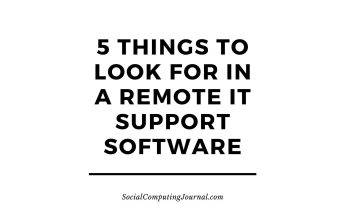Have you ever been stuck on a project and had someone casually say something that unlocked everything? Maybe they didn’t even know they were helping. They just looked at your idea from a different angle. Suddenly, the wall you were banging your head against looked more like a puzzle you could solve.
That moment—unexpected clarity through conversation—is at the heart of peer collaboration. It’s a powerful, often-overlooked force behind effective business strategies. And in today’s fast-moving world, it’s more relevant than ever.
Teams are solving problems across time zones. Remote work is now a standard. Group chats on Slack, shared docs, and Zoom whiteboards are our new boardrooms. Whether you’re at a start-up or part of a Fortune 500 company, the way people work together shapes what businesses become.
In this blog, we’ll explore how working with peers shapes strategy, why it goes beyond simple teamwork, and how structured programs teach future leaders to build strong ideas together.
Contents
Why Group Work Isn’t Just Homework with Suits
Let’s be honest. Most of us hear “group project” and immediately remember that one guy who ghosted until the final hour—or the person who took over everything and renamed the file four times. So why is collaboration still a buzzword in business circles?
Because when done right, it works.
In the real world, strategy is never made in a vacuum. Businesses face complex issues like supply chain breakdowns, shifting customer expectations, or the ripple effects of global inflation. No one person sees the full picture. Peer collaboration fills in the gaps. It pulls different experiences, skill sets, and thought processes into one room. Sometimes what looks like disagreement is the starting point of innovation.
Structured learning environments make this more visible. For example, students in a 2 year MBA program often come from different industries, regions, and roles. One might have a background in logistics, another in marketing, and another in finance. When they team up on case studies or live projects, they’re not just completing coursework. They’re training for the complexity of real-world decision-making. Their conversations mimic what happens in executive boardrooms.
And because these programs create shared pressure—deadlines, presentations, peer evaluations—they force people to listen, adapt, and compromise. In other words, they make you work like you would in an actual company, not a theoretical one.
How Teamwork Shapes Strategic Thinking
Now that we’ve cleared up why peer collaboration isn’t just a classroom gimmick, let’s look at how it builds stronger business strategies.
First, collaboration exposes blind spots. You might think your plan is bulletproof until someone with a different lens points out a flaw. That’s not a setback; that’s free consulting. The faster you spot weaknesses, the more time you have to fix them before real stakes are on the line.
Second, team-based work helps ideas evolve. Think of it like songwriting. One person hums a melody, another adds lyrics, and soon the group has a full composition. Strategy works the same way. An initial concept might be vague or unpolished. With the right input, it becomes something sharper and more practical.
This is where collaboration also saves money. Brainstorming in a team reduces the likelihood of pursuing an idea that hasn’t been thoroughly tested from multiple angles. Even big companies have learned this the hard way. Just look at Quibi—a streaming service that raised nearly $2 billion and flopped within months. Critics have since pointed out how insular decision-making contributed to its downfall. When you don’t open the floor to peers, you risk building a product for a world that doesn’t exist.
Third, collaboration encourages risk—but in a good way. In a team, people feel safer floating ideas they wouldn’t voice solo. Maybe someone wants to pitch an edgy campaign or suggest a radical process shift. A healthy peer environment turns those “what ifs” into real options on the table.
Tips for Building Collaborative Strategy in the Workplace
Knowing collaboration matters is one thing. Creating a workplace where it happens is another. Here are some practical ways to get there:
Start with structure.
Spontaneous conversations are great, but teams also need dedicated time for strategy development. Set up recurring meetings where the focus isn’t just updates, but idea generation. These should be safe spaces—no bad ideas, no interruptions, no hierarchy dominating the discussion.
Mix up the room.
Bring in people from different departments when planning a strategy. It might feel slower at first, but it creates better results. A person in customer service may flag issues you wouldn’t catch in product design. A junior staffer may have a better read on shifting digital habits than someone who’s been in the field for 20 years.
Give credit often and publicly.
Nothing shuts down collaboration faster than idea theft. Make a habit of acknowledging people who contributed, even if the idea evolved. It builds trust and keeps the pipeline of ideas flowing.
Use tech—but wisely.
Collaboration platforms like Miro, Notion, or Slack can help document and share ideas across locations. But don’t let them replace real conversation. Tools should support people, not replace interaction.
Normalize disagreement.
Some of the best strategy sessions involve arguments—constructive ones. Set ground rules for debate, like listening without interrupting or taking a break if emotions rise. Tension isn’t always bad. It means people care.
Where Collaboration Fails—and What to Do About It
Of course, not every group sings in harmony. Sometimes collaboration stalls. Maybe one person dominates the room. Maybe everyone agrees too quickly. Maybe no one speaks up at all. These are warning signs.
Fixing it starts with culture. Leadership has to model the kind of behavior they want: listening more than talking, asking questions instead of giving orders, and being open to feedback. That sets the tone for everyone else.
Also, don’t confuse busy meetings with useful ones. If collaboration feels unproductive, pause and ask: Are we solving something or just talking around it? Does everyone know why they’re here? Are we hearing new ideas or repeating the same ones?
Small tweaks can shift the dynamic. Try rotating the person who leads each meeting. Or switch to smaller breakout groups where quieter people have more space.
At its core, strategy is about choices. What to pursue. What to ignore. When to act. And who to trust when you don’t have all the answers.
Peer collaboration doesn’t just make this process easier—it makes it more accurate. It catches your blind spots, brings in fresh thinking, and builds decisions that stick because more people helped shape them. Whether you’re sitting in a conference room or a classroom, that’s the kind of teamwork that creates real progress.







